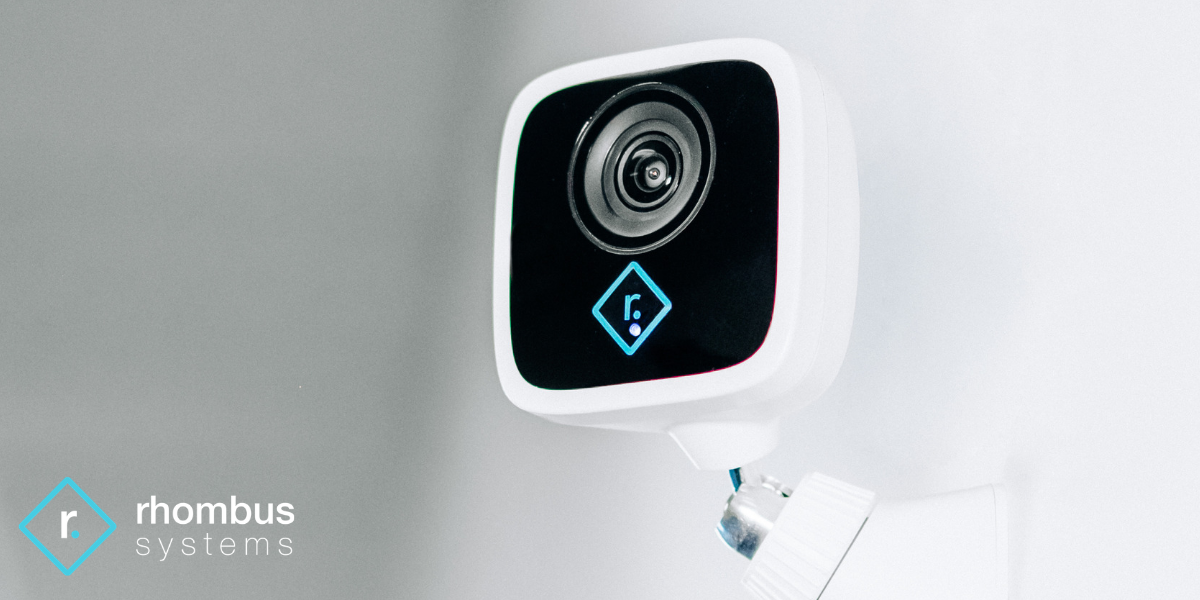Wired vs. Wireless Commercial Security Cameras: The Pros and Cons

Determining what type of commercial surveillance camera to use can be a tough decision. If you select the right option, you’re in for an easy ride, but choose incorrectly – be prepared for some frustration.
Here we’ll focus on the age-old question – should I purchase a wired or wireless commercial security camera and what are the pros and cons of each?
In this post, we’ll cover the following topics:
• The Pros and Cons of Wired Surveillance Cameras
• The Pros and Cons of Wireless Security Cameras
• Wired and Wireless Surveillance Camera Recommendations
The Pros and Cons of Wired Surveillance Cameras
Wired security cameras align with what we have previously known to be traditional video security. These cameras are used in permanent locations due to the cabling that is required.
Wired POE IP security cameras use Cat-5 or Cat-6 Ethernet cabling to transmit data through a router or NVR, as well as supply power to the camera.
With traditional hard-wired analog cameras, two cables are required – one to supply power and another to connect to the recorder/DVR. In our experience, PoE delivers better video quality compared to a recorder/DVR making it an excellent choice for organizations looking to upgrade.
Now that you understand the two wired options, let’s discuss the pros and cons:
Pros of Wired Surveillance Cameras
Reliability
Since the cameras are physically connected, wired systems offer more reliability and resistance from wireless signal interference. Data transmission is much more stable compared to other wireless options.
Ideal for Long-Term Environments
Wired security cameras are best for long-term situations. When a business chooses a wired system, they expect their investment to serve them for at least a few years and be dependable during that time. Wired cameras are professionally installed and are more durable than wireless cameras.
Able to support larger systems
With a wired system, you have the ability to support a large number of cameras to cover more space. Management and maintenance of the system are ideal for organizations that care about their physical security and video infrastructure.
Cons of Wired Surveillance Cameras
More Challenging Installation
A significant drawback with wired security cameras is installation. Wired systems require drilling, cables, and a power supply – which can limit potential install locations.
Portability
Since cabling needs to be installed, wired security cameras are less portable than a wireless system and more difficult to conceal or hide.
Vulnerable to Power Outages
If the power goes out, your security cameras will go out as well. Although power outages rarely happen, having a back-up generator in place will ensure your system stays online.
The Pros and Cons of Wireless Security Cameras
Wireless security cameras are great for organizations with a minimal need for security cameras. They usually come in two options: battery or solar-powered wire-free security cameras, and conventional wireless security cameras. Data transmission happens wirelessly for both options, but the power source is where the two differ.
Battery or solar powered wire-free security cameras are powered like the name suggests – by batteries or solar panels. These cameras are extremely portable and easy-to-install.
Conventional wireless security cameras must be plugged in for power, but data transmission happens wirelessly.
Like wired surveillance cameras, wireless security cameras possess their own share of pros and cons.
Pros of Wireless Security Cameras
Easy Installation
Cables and recorders are not needed with a wireless option since data is transmitted wirelessly. This makes wireless security cameras quick and easy to install.
Flexible and Portable
Wireless security cameras require less installation work and can be set-up or moved around with ease. Potential install locations increase with this option, but the cameras must be close enough to maintain a strong Wi-Fi connection.
Remote Access
Since wireless security cameras are connected to the internet, many systems include the ability for remote access. This enables business owners to view live feeds from a web browser or mobile device.
Cons of Wireless Security Cameras
Interference from Outside Sources
By sending data through Wi-Fi, interference from nearby devices can affect a camera’s performance and could potentially be hacked.
Relies on Wi-Fi Signal
Battery or solar-powered cameras rely on external power. But with a conventional wireless system, power is necessary. Wireless options require a Wi-Fi signal to operate properly. The cameras must be installed within Wi-Fi range or extenders could be used to boost Wi-Fi performance.
Maintenance
With a battery-powered camera, batteries must be charged or replaced frequently. If batteries are not replaced, cameras can go down and the overall system can be compromised. For a conventional wireless camera, maintenance is similar to that of a wired camera but with fewer hardware components to check.
Wired and Wireless Surveillance Camera Recommendations
If you’re looking for the best wired or wireless option, we highly recommend checking out the Rhombus R1 camera.

With the R1, you get the best of both worlds. Down below are some of the features that make it different than traditional wired/wireless security cameras.
Flexibility
The R1 can be set-up in a multitude of ways. A Cat-5 or Cat-6 ethernet cable supply both power and internet to the camera. Or it can be powered solely by ethernet and connect via Wi-Fi for data transmission. The system can handle large deployments, and all cameras can be managed from a single console. One of our customers even constructed a completely solar-powered camera to use in a remote environment.
Reliability
Though the R1 can operate as a wireless camera, it is not dependent solely on Wi-Fi like other wireless systems. If the internet goes down, the camera will continue to record and store footage locally on the camera.
Easy installation
The camera is 100% plug-and-play making installation incredibly easy – all that’s required is to connect the ethernet cable. This allows the R1 to be very portable and work in both short and long-term environments.
Low maintenance
Since the R1 is a modern security camera, it does not require any additional hardware, such as excess cabling, recorders, servers, or hard drives. This reduces the amount of time needed to maintain the system.
Advanced Software
Remote access, activity-based indexing, and a clean user-interface enable the R1 to be much more enjoyable for employees to use compared to other wired/wireless options.
Closing
With a modern, cloud-managed solution you can receive better performance with simple infrastructure that is easy to manage and maintain. When looking for a new commercial security camera to implement, you should ask yourself a few key questions.
-
How much maintenance is required over the lifetime of the system?
-
How flexible is the system and how difficult is it to add more cameras?
-
Is the software easy to use and understand so people within your organization will love to using it?
-
How secure is the system, and what does the vendor do to ensure their technology cannot be compromised?
There are many other points to consider when researching different options, but we believe these four questions are critical for an organization to consider. As always, if you have any questions about this blog post, or about upgrading, please reach to sales@rhombussystems.com.
Related Articles

Try Rhombus for Free!
See why school districts, cities, and Fortune 500 companies use Rhombus
Start Trial

